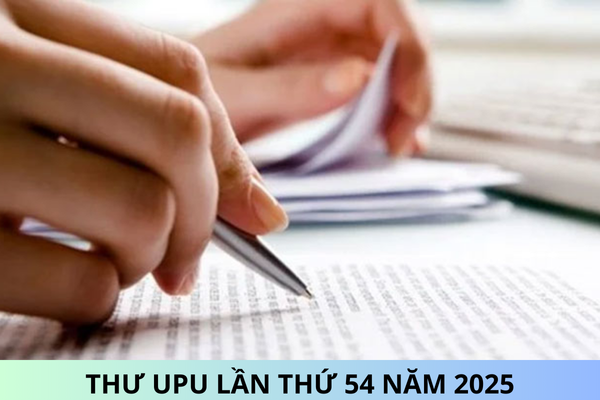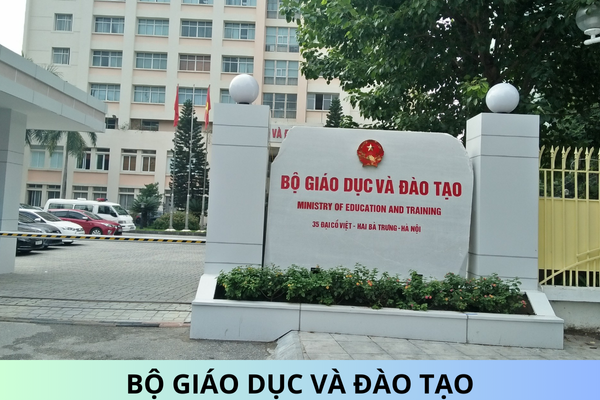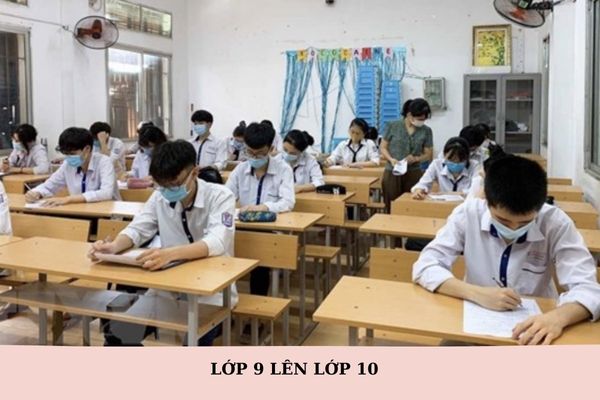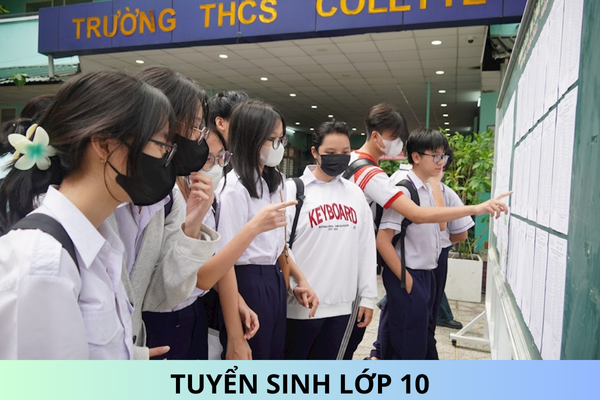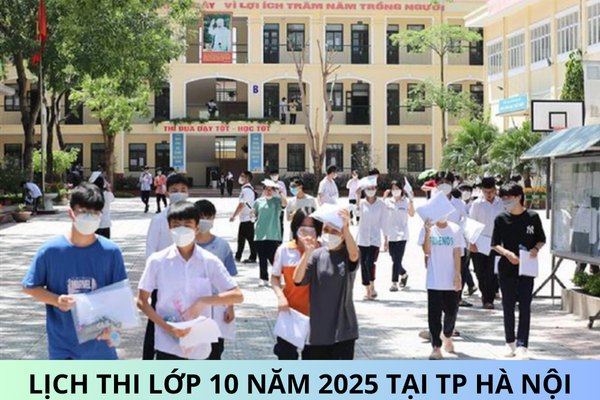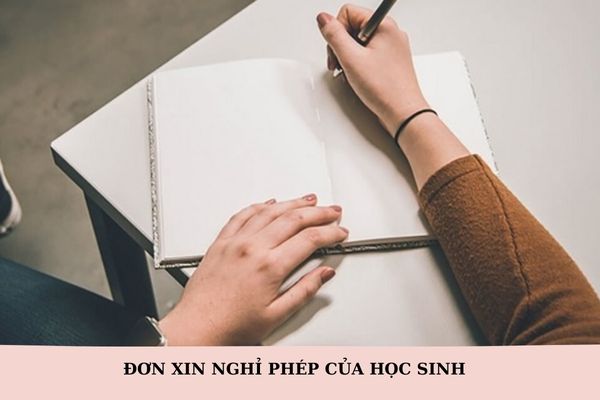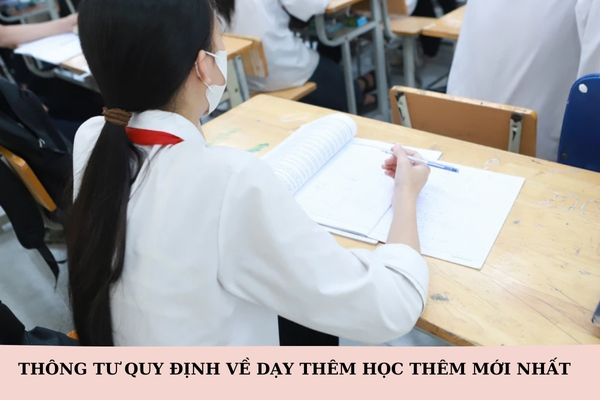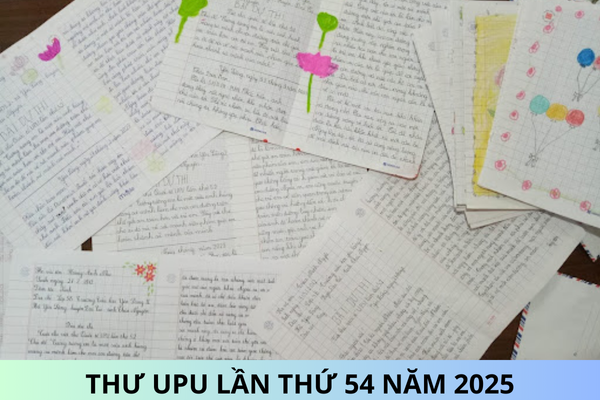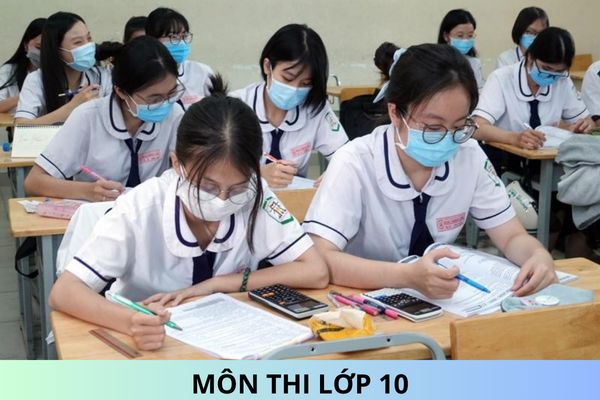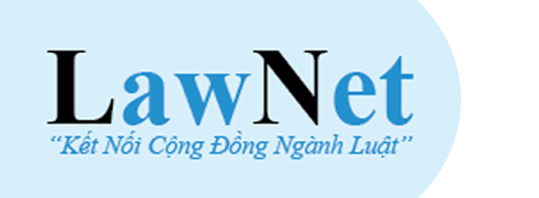Checklist for safe preschool education facilities for preventing and controlling accidents and injuries in Vietnam
What are regulations on checklist for safe preschool education facilities for preventing and controlling accidents and injuries in Vietnam? Looking forward to support according to the latest regulations.
Checklist for safe preschool education facilities for preventing and controlling accidents and injuries in Vietnam
According to Form 1 of the Appendix issued together with Circular 45/2021/TT-BGDĐT (effective from 15/02/2022) stipulating checklist for safe preschool education facilities for preventing and controlling accidents and injuries as follows:
|
No |
Content |
Assessment (pass/fail) |
|
A |
Criteria for facilities |
|
|
I |
Location, scale, auxiliary blocks and technical infrastructure |
|
|
1 |
The location, scale, area, room blocks, auxiliary blocks and technical infrastructure must meet the minimum standards of facilities as prescribed. |
|
|
2 |
The campus is separated from the outside by a protective fence; The school gate must be solid, have nameplates and open and close according to the specified hours. |
|
|
3 |
The playground is flat, non-slip; There is a system of signs indicating locations and playing areas with symbols suitable for children's perception. |
|
|
4 |
The system of trees is suitable for the landscape, creating shade; Old trees are reinforced, cut and trimmed to ensure safety and avoid breakage. |
|
|
5 |
System of flower beds, plant pots without sharp corners; flower pots and ornamental plants placed in a safe and secure location; Do not plant trees with hard shells, flowers and fruits that have poisonous sap, sharp spines or attract flies and mosquitoes. |
|
|
6 |
Water storage systems (wells, tanks, tanks...) with lids and locks; have doors or barriers at exits to areas such as canals, ditches, streams, ponds, lakes, deep pits, swimming pools (if any). |
|
|
7 |
The system of sewers and trenches must be sealed, without leakage or stagnation, causing environmental pollution; waste collection area arranged independently, with separate entrance and exit away from functional room blocks; Ensure proper waste collection. |
|
|
8 |
The fire prevention and fighting system has been tested and accepted; Fire prevention and fighting equipment is inspected according to regulations and ensures normal operation. |
|
|
9 |
The medical room has essential medicines, ensuring their expiry dates; have first aid equipment and conditions and equipment for disease prevention in accordance with regulations; there is a table of instructions on first aid procedures for common accidents and injuries to children. |
|
|
II |
Living room |
|
|
10 |
The group/class room is leak-proof, cool, clean and well-lit |
|
|
11 |
Door systems (doors, windows) with fixed hooks when the door is open; windows have strong and safe bars; The entrance door of the group of children has a safety bar. |
|
|
12 |
The space in the room and group is arranged in a friendly, age-appropriate, neutral color scheme; The height of pictures and equipment is suitable for children's vision. |
|
|
13 |
The play corner is arranged in accordance with the area of the room, group/class, safe and convenient for children to operate; Do not arrange a play corner in the area of the door and toilet door. |
|
|
14 |
Areas in the group/class have a system of instructions/regulations by scientific symbols, suitable for children's perception. |
|
|
15 |
Power cords, electrical outlets, TV antennas, fuses, switches... are placed in a place where children cannot reach (a height greater than 1.50 m from the floor) or with a box/cover/safety net. |
|
|
III |
Play porch, railing, stairs |
|
|
16 |
Handrails, play porches are designed in accordance with regulations (height is greater than 1m, use vertical bars with a distance of less than 10 cm, do not make horizontal dividing bars) or are firmly reinforced, ensuring safety; Do not place tables, chairs and utensils in the railing area. |
|
|
17 |
Stairs with handrails, stairs designed in accordance with regulations, easy to use for children; elevators, food transport ladders (if any) with doors and locks to ensure safety. |
|
|
IV |
Toilet |
|
|
18 |
Having sanitary equipment suitable for children, easy to use; have enough water to use; for kindergarten, separate toilets for girls and boys. |
|
|
19 |
Restrooms ensure that teachers are easily observed; the toilet floor is always dry and clean; water containers (buckets, pots...) with safety lids. |
|
|
21 |
There are toilet facilities for disabled children |
|
|
22 |
Containers of chemicals (detergents..) are clearly labeled and kept out of the reach of children. Use only cleaning agents in the specified list. |
|
|
V |
Equipment, utensils, toys, learning materials |
|
|
23 |
Equipment, utensils and toys in the group/class must be safe and suitable for age; utensils and toys according to the list and ensuring standards as prescribed. |
|
|
24 |
Outdoor toys are arranged in a safe location, ensuring that children are easy to use; Do not use broken or damaged toys that are unsafe for children. |
|
|
25 |
Equipment, utensils and toys are scientifically arranged, age-appropriate, friendly, and convenient for children to access and use; the system of cabinets, shelves, shelves... are safely stacked, with fixed screws/latches. |
|
|
26 |
Drinking water containers, cabinets/cup holders are arranged in an area that is easy for children to get, easy to store and safe to use. |
|
|
27 |
Documents and learning materials must meet safety, aesthetic and educational requirements; suitable for children's psychological, physiological and cognitive needs, promoting creative thinking ability, stimulating curiosity, discovery and curiosity in children. |
|
|
28 |
Visual aids and tools that cause unsafety (knife, scissors, beads, etc.) should only be used by children under the guidance and supervision of teachers. |
|
|
29 |
There are tools, equipment, toys, learning materials dedicated or adapted to children with disabilities, children with special needs. |
|
|
VI |
Kitchen |
|
|
30 |
Independent of function room blocks; ensure the design according to the one-way kitchen process, air circulation. |
|
|
31 |
Having adequate equipment to meet food safety requirements according to current regulations; Food service utensils are made of safe materials and are cleaned. |
|
|
32 |
Having a contract to provide food or a written commitment on the origin and origin of the food. |
|
|
33 |
The process of processing, cooking, sharing food ensures food safety regulations |
|
|
34 |
Perform 3-step verification and store food samples in accordance with regulations. |
|
|
VII |
Criteria for administrators, teachers, staff and pedagogical environment |
|
|
35 |
No managers, teachers or employees violate teacher ethics. |
|
|
36 |
There is no violence or abuse of children in preschool institutions. |
|
|
37 |
Managers, teachers and employees are trained to improve their capacity on safety assurance, accident and injury prevention and control; first aid and first aid skills; child abuse prevention and control; pedagogical behavior skills. |
|
|
38 |
There are enough teachers as prescribed. |
|
|
39 |
Cooking staff ensure the health conditions and food safety knowledge as prescribed. |
|
|
40 |
Integrate the education of children with knowledge and skills for self-protection in daily child rearing, care and education activities; implementing inclusive education for children with special needs. |
|
|
41 |
The clothes of managers, teachers and staff are neat, polite and convenient in the work of raising, caring for and educating children. |
|
|
VIII |
Criteria on organization and operation; school, family and social relations |
|
|
42 |
There is a plan to build a safe preschool educational institution, to prevent and prevent accidents and injuries. |
|
|
43 |
Telephone numbers, comment boxes, forms of receiving information about violence and abuse, and ensuring child safety are publicized in easy-to-observe and accessible locations. |
|
|
44 |
There are communication boards on safety assurance, disease prevention and control, information on knowledge of child rearing, care and education for children; have a public financial sheet and children's daily menu (for preschool institutions that organize half-boarding). |
|
|
45 |
There are regulations on picking up and dropping off children to prevent children from being lost; evacuation plans in case of unusual situations (fire, explosion, emergency, natural disaster...) |
|
|
46 |
Having an information technology system connected to the internet to look up information and be controlled for safe, healthy and appropriate content. |
|
|
47 |
There is a system to connect and share information between schools and families on the results of child rearing, care and education, and timely information on the child's progress or difficulties. |
|
|
48 |
There is a set of cultural codes of conduct in preschool educational institutions according to regulations. |
|
|
49 |
Carry out school health work according to regulations; coordinate with the local health sector in health care for children. |
|
|
50 |
Family and community participation in reviewing, evaluating, building a safe educational environment, preventing and combating accidents and injuries. |
|
Evaluate:
- Each criterion is rated "pass" or "fail"
- Mandatory criteria (20 criteria are underlined): 1, 2, 5, 6, 8, 9, 10, 13, 15, 16, 17, 19, 24, 28, 32, 34, 35, 36, 42, 48.
Checklist for safe independent daycare groups, independent kindergarten classes, independent preschool classes for preventing and controlling accidents and injuries in Vietnam
According to Form 2 of the Appendix issued together with Circular 45/2021/TT-BGDĐT (effective from 15/02/2022) stipulating checklist for safe independent daycare groups, independent kindergarten classes, independent preschool classes for preventing and controlling accidents and injuries as follows:
|
No |
Content |
Assessment (pass/fail) |
|
A |
Criteria for facilities |
|
|
I |
Locations and ancillary works |
|
|
1 |
The location is far from service establishments, production and livestock production facilities, warehouses containing harmful or polluting goods, which are in direct danger of generating fire and explosion and not in the danger warning zone. |
|
|
2 |
The campus is separated from the outside, with name plates according to regulations; have gates/doors that open and close according to specified hours. |
|
|
3 |
Children's play area is flat, non-slip; there is a system to guide positions and play areas by scientific symbols, suitable for children's perception. Do not use broken or damaged toys that are unsafe for children. |
|
|
4 |
System of flower beds, plant pots without sharp corners; flower pots and ornamental plants placed in a safe and secure location; Do not plant trees with hard shells, flowers and fruits that have poisonous sap, sharp spines or attract flies and mosquitoes. |
|
|
5 |
Water storage systems (wells, tanks, tanks...) have solid lids. There are gates or barriers at the entrance to areas such as canals, streams, ponds, lakes, deep pits (if any). |
|
|
6 |
There is an emergency exit; Fire fighting equipment is tested to ensure normal operation. |
|
|
7 |
The system of sewers and trenches to drain rainwater and wastewater must be sealed, without leakage or stagnation causing environmental pollution. |
|
|
8 |
Garbage collection area is arranged independently, away from the group room/class; Convenient for garbage collection and transportation. |
|
|
9 |
The medical room/corner is arranged in a convenient location for first aid/first aid work; having essential drugs, ensuring their expiry date; have first-aid instructions; have the equipment to prevent disease in accordance with regulations. |
|
|
10 |
The railings, play porches are designed in accordance with regulations or reinforced firmly, ensuring safety (height is greater than 1m, the distance between the dividing bars is less than 10cm); Do not place tables, chairs and utensils in the railing area. |
|
|
11 |
Stairs with handrails and safety nets; there are gates at the top and bottom of the stairs; elevators, food transport ladders (if any) with doors and locks to ensure safety. |
|
|
II |
Child rearing, care and education room |
|
|
12 |
Rooms and groups must ensure the area according to regulations, are not leak-proof, cool, and have enough light; The floor is flat, non-slip. |
|
|
13 |
Door systems (doors, windows) with fixed hooks when the door is open; windows have strong and safe bars; The entrance door of the group of children has a safety bar. |
|
|
14 |
The space in the room and group is arranged in a friendly, age-appropriate, neutral color scheme; The height of pictures and equipment is suitable for children's vision |
|
|
15 |
The play corner is arranged in accordance with the area of the room, group/class, safe and convenient for children to operate; Do not arrange a play corner in the area of the door and toilet door. |
|
|
16 |
Electrical outlets, TV antennas, fuses, switches... are placed in a place where children cannot reach (height greater than 1.5 m from the floor) or have a safety box/cover/net. In the group/class, do not use stoves, irons, electric kettles, pumps... and flammable and explosive substances. |
|
|
III |
Equipment, utensils, toys, learning materials |
|
|
17 |
Equipment, utensils and toys in the group/class must be safe, appropriate for the age group, and meet the prescribed standards. |
|
|
18 |
Equipment, utensils and toys are conveniently arranged for children to access and use, including children with disabilities; cabinets, shelves,... are safely stowed, with fixed screws/latches; Do not use broken or damaged toys that are unsafe for children. |
|
|
19 |
Materials and learning materials must meet the requirements for safety, aesthetics, and education according to regulations and in sufficient quantity according to the number of children. |
|
|
20 |
Visual aids and tools that are easy to cause unsafety (knife, scissors, beads,...) are only used by children under the guidance and supervision of teachers. |
|
|
21 |
Drinking water containers, cabinets/cup holders are arranged in an area that is easy for children to get, easy to store and safe to use. |
|
|
IV |
Toilet |
|
|
22 |
Restrooms ensure that teachers are easily observed; Sanitary ware suitable for children, friendly, easy to use. |
|
|
23 |
The toilet floor is always dry and clean; water containers (buckets, pots...) with safety lids. |
|
|
24 |
Chemical containers (detergents..) must be clearly labeled, in the right place, out of the reach of children. Use only cleaning agents in the specified list. |
|
|
V |
Kitchen |
|
|
25 |
Independent or with a door separating from the child care and education area; ensure air circulation; layout of areas according to a one-way process; have fire fighting standards, fire extinguishers are tested and still usable. |
|
|
26 |
Equipment meets food safety requirements according to current regulations; Equipment and utensils for eating and drinking are made of safe materials and are cleaned. |
|
|
27 |
Having a contract to provide food or a written commitment on the origin and origin of the food. |
|
|
28 |
The process of processing, cooking, and dividing food ensures food safety regulations; Maintain food samples according to regulations. |
|
|
VI |
Criteria for administrators, teachers, staff and pedagogical environment |
|
|
29 |
No managers, teachers or employees violate teacher ethics. |
|
|
30 |
There is no violence or abuse of children in preschool institutions. |
|
|
31 |
Managers, teachers and employees are trained to improve their capacity on safety assurance, accident and injury prevention and control; first aid skills; child abuse prevention and control; pedagogical behavior skills. |
|
|
32 |
Ensure that there are enough teachers to carry out the task of nurturing, caring for and educating children. |
|
|
33 |
The clothes of managers, teachers and staff are neat, polite and convenient in the work of raising, caring for and educating children. |
|
|
VII |
Criteria on organization and operation; school, family and social relations |
|
|
34 |
There is a plan to build a safe preschool educational institution, to prevent and prevent accidents and injuries. |
|
|
35 |
There is a written commitment between the preschool institution and the family on ensuring the safety of children; have regulations on picking up and dropping off children to prevent children from being lost. |
|
|
36 |
Telephone numbers, comment boxes and forms of receiving information about violence and abuse, and ensuring child safety are publicized in easy-to-observe and accessible locations. |
|
|
37 |
There is an appropriate form of information to the family about the results of child rearing, care and education activities, the child's progress or difficulties. |
|
|
38 |
Organize monitoring, evaluation and health care for children according to regulations. |
|
|
39 |
There is a communication board about safety; disease prevention; information on children's knowledge of child rearing, care and education; Financial disclosure sheet and children's daily menu (for preschool institutions that organize day-boarding). |
|
|
40 |
Family and community involvement in reviewing, assessing and remediating risk factors for child insecurity. |
|
Evaluate:
- Each criterion is rated "pass" or "fail"
- Mandatory criteria (15 criteria are underlined ) : 1, 2, 5, 6, 11, 16, 21, 23, 24, 25, 28, 29, 30, 34, 35.
Best Regards!
